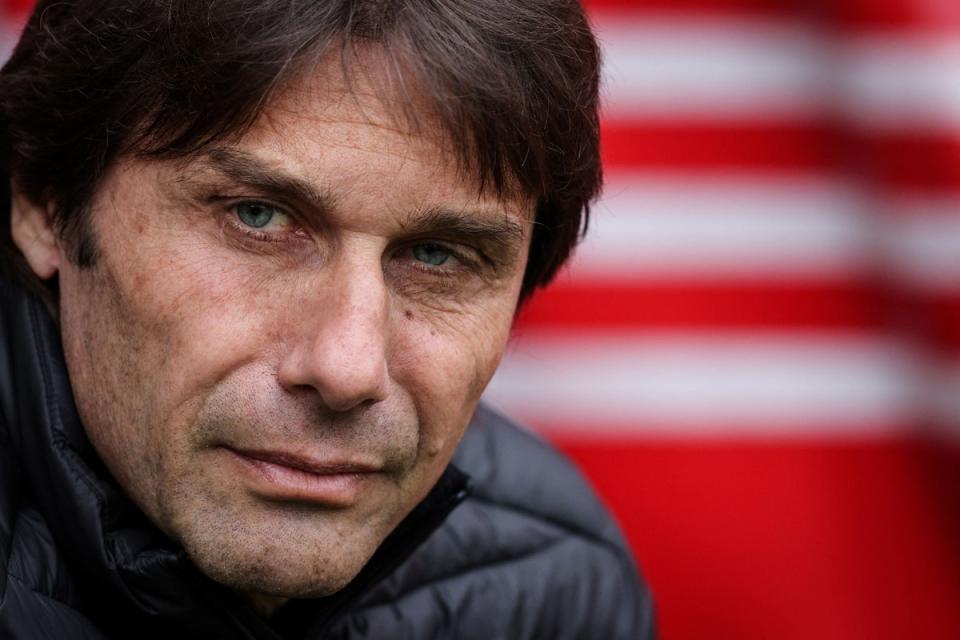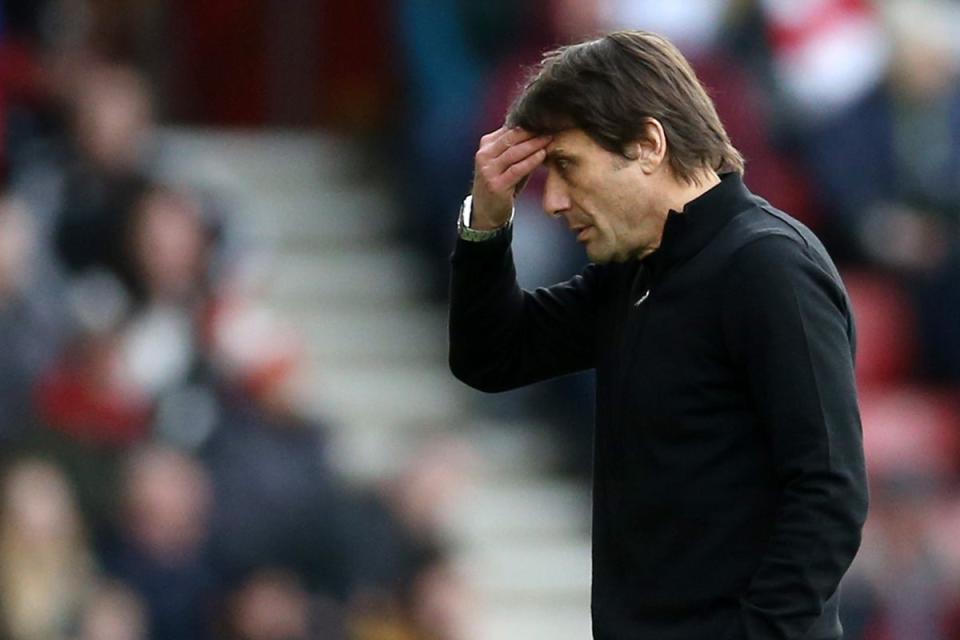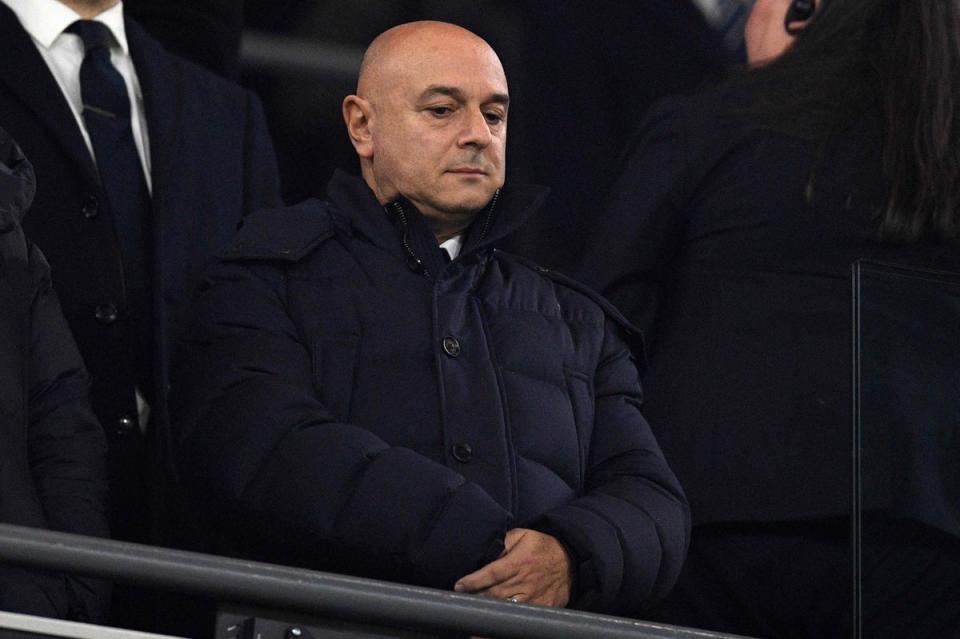How the uneasy marriage between Antonio Conte and Tottenham turned ugly

Antonio Conte’s spell at Tottenham, which came to an end when he left the club by mutual agreement on Sunday, played out in a familiar series of stages.
Just as at Juventus, Chelsea and Inter Milan, Conte demonstrated his brilliance as a coach in an initial period of success, before increasing his demands and becoming frustrated at a perceived lack of backing and an inability to compete at the top.
He ultimately departed in acrimony after lashing out at his players and paymasters.
Conte’s position felt completely untenable after he torched his relationship with the squad in a furious outburst following last Saturday’s 3-3 draw with Southampton, and the only surprise is that it took the club over a week to confirm his exit.
The difference at Spurs to Conte’s previous clubs is that his initial “success” was not what he considered success at all - merely a top-four finish - and his boom-and-bust cycle unravelled more quickly than usual - both points reflecting that Conte and the club were a dreadful fit from the start.
The 53-year-old is simply not suited to the patient building now essential for any Premier League club which is not state-backed and particularly Tottenham, who operate under chairman Daniel Levy’s strict financial controls, lack a recent history of winning, and never truly committed to a foundational rebuild post-Mauricio Pochettino.
Conte inherited a squad not without talent but imbalanced and slightly stale. He was blindsided by the scale of the job and never committed to seeing it through.
After an inconsistent start, he transformed the side, improving the players’ fitness and creating something close to a classic Conte “war machine” in the second half of last season.
His furious outburst after the 1-0 defeat at Burnley in February 2022, as well as the signings of Dejan Kulusevski and Rodrigo Bentancur and a reduced schedule, helped Spurs to find their groove, and they won 10 of their final 14 games to return to the Champions League.
The high water-mark of his tenure was the 3-0 thrashing of Arsenal, which suggested it was Spurs who were the better-placed to kick-on this term.
Instead, by Conte’s own admission, they have gone backwards, their football no long effective and exhilarating but predictable and boring.
The players grew tired of his repetitive and gruelling training sessions, and opponents worked out their approach.
All the while, Conte’s refusal to commit to Spurs beyond the end of his contract, which motivated his players last season, was increasingly a distraction and seemed to contribute to the side’s inconsistency, fragility and sense of drift.
The Italian has endured an horrendous year personally, losing three close friends including Spurs fitness coach Gian Piero Ventrone in October, before he underwent emergency gallbladder surgery.

Plainly, he has not been at his best but his tired tactics, frustrating inflexibility and refusal to rotate players were all factors in Spurs’ decline.
Last season’s Golden Boot winner Heung-min Son is among those to seriously struggle and only Harry Kane’s 21 Premier League goals have kept the club competitive.
They reached the Champions League knockout stage and, somewhat strangely, Conte leaves them in fourth place, but their cup exits to Nottingham Forest, Sheffield United and AC Milan were all bitterly disappointing. The 1-0 loss at Bramall Lane in the FA Cup fifth-round was the beginning of the end for Conte.
Really, no-one should be surprised by how this uneasy marriage fractured, least of all Conte and Levy. The chairman should have realised he was a hiring one of the game’s most demanding managers, who would quickly grow frustrated at not competing to win the title and Champions League.
Conte should have realised he was joining a club who would never spend hundreds of millions, and particularly not on the experienced ‘winners’ he wanted.
Conte therefore leaves Spurs with similar grievances to many of his predecessors, publicly bemoaning the quality of his players and privately frustrated at the club’s spending. Is that fair? Was he properly backed? That is likely the main question which will divide supporters in assessing his 16 months in charge.
Conte was often left to rely on substandard relics of the Pochettino era in defence.
Certainly, Spurs could have done more to give Conte the tools he needed to transform the team.
His well-established system, which delivered titles at his three previous clubs, relies on a watertight back-three and a pair of dynamic wing-backs but he had neither the defenders nor the wide men to make his approach a long-term success.
Conte was often left to rely on substandard relics of the Pochettino era in defence, and when Italy centre-half Alessandro Bastoni refused to leave Inter last summer, Spurs compromised by taking Clement Lenglet on loan.
Even in Conte’s last game in charge at St. Mary’s, which prompted his rant, watching Pedro Porro burst forward and finish emphatically, it was possible to wonder how different his reign might have been if the club had signed two proper wing-backs in January 2022.
There is absolutely no point in having a coach like Conte without giving him the tools to succeed and, even within budget, Spurs could have done more to build a squad in their manager’s image.
That said, Conte was still backed more than any of Levy’s previous managers. The club spent nearly £200million on his watch, and showed a willingness to compromise by adapting their transfer strategy to his demands.
Before Conte, Levy would never have sanctioned the purchase of a 33-year-old on huge wages, even on a free transfer, as he did with Ivan Perisic, while Conte was given a £60m second striker in Richarlison, after his predecessors all had to settle for stop-gaps as understudies to Kane.

For his part, Conte showed less willingness to compromise, resolutely refusing to play “club signing” Djed Spence, who might have been a solution at right wing-back. January signing Arnaut Danjuma has similarly been ignored, while Conte’s never really appeared to trust Richarlison nor Yves Bissouma.
He also refused to adapt his system to suit the players he did have, never once starting with four forwards and persisting doggedly with a formation which came to feel outdated and did not play to the strengths of his top-heavy squad.
The return on Spurs’ £100m summer spend has been awful, but time will tell if Richarlison, Spence and Bissouma were questionable business or mismanaged by Conte.
In the end, anti-Levy fans can make a case that Conte was not backed sufficiently, while anti-Conte supporters can claim that he was. The reality is somewhere in between and again speaks to the fundamental unsuitability of the match.
Levy was, characteristically, not prepared to rip the club’s entire transfer strategy to pursue short-term success under a coach who refused to commit to the club long-term. Conte was, equally characteristically, not prepared to give an inch.
Inevitably, the end result was disharmony and a parting of the ways between a club and coach who were always a bad match and should both have known better.

 Yahoo Sport
Yahoo Sport 





































